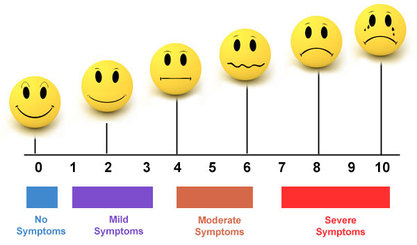 Acute Pain Feature • Pain usually concordant with degree of tissue damage, which remits with resolution of the injury • Reflects activation of nociceptors and/or sensitized central neurons • Often associated with autonomic nervous system and other protective reflex responses (e.g., muscle spasm, “splinting”) Chronic Pain Feature • Low levels of identified underlying pathology that do not explain the presence and/or extent of the pain • Perpetuated by factors remote from the cause. • Continuous or intermittent with or without acute exacerbation. • Symptoms of autonomic nervous system hyperactivity less common. • Irritability, social withdrawal, depressed mood and vegetative symptoms (e.g., changes in sleep, appetite , libido), disruption of work, and social relationships Cancer Pain • Strong relationship between tissue pathology and levels of pain • Limited time frame that permits aggressive pain management • Rarely involves medical-legal or disability issues. Chronic Non-cancer Pain • Weak relationship between tissue pathology and pain levels • Prolonged, potentially life-long, pain • May involve medical, legal, disability issues/conflicts, work or relationship problems, physical de-conditioning, psychological symptoms (see chronic pain above) • May progress to chronic pain syndrome Chronic Pain Syndrome • Preoccupation with somatic functioning • Lifestyle centered on seeking immediate pain relief, with excessive, nonproductive, and often harmful use of health care • services • Repeated attempts to obtain pain-related financial compensation (e.g., Social Security,. Veterans’ benefits) • Numerous symptoms and signs of psycho-social dysfunction that the patient attributes to the pain (e.g., anger, depression, anxiety, substance abuse, disrupted work or personal relationships)
0 Comments
Leave a Reply. |
New Patient SpecialArchives
July 2024
Categories |
 RSS Feed
RSS Feed
